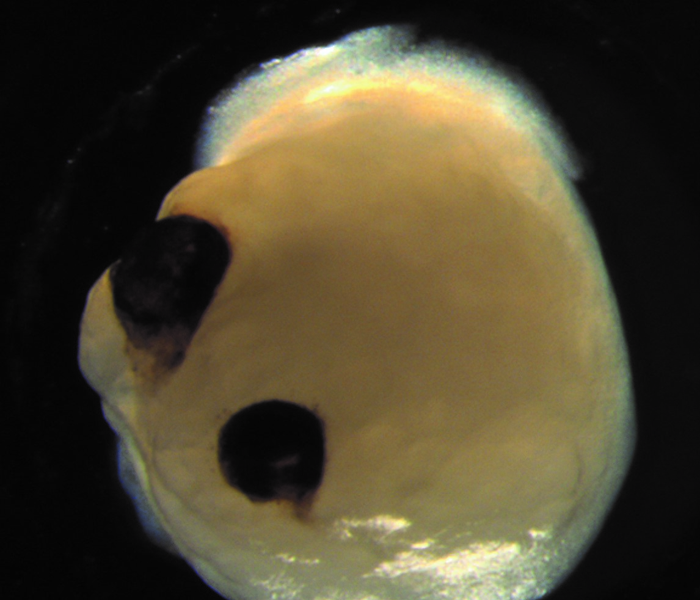 The mini brain organoids will help researchers better understand eye development and disease.
The mini brain organoids will help researchers better understand eye development and disease.
Stem cells were used to develop organoids that resemble miniature brains with eye-like structures, called optic cups, which are sensitive to light, according to a new report recently published in the journal Cell Stem Cell.
The organoids will help researcher better understand how eyes develop and may provide new insights on how to treat early eye diseases.
Organoids are small, 3-D tissue cultures created to replicate functional organs, for research purposes. Organoids are normally created from stem cells, such as adult stem cells and embryonic stem cells. In this instance, a special form of adult stem cell, called induced pluripotent stem cells (iPSCs) were used. These are stem cells derived from adult human cells, and programmed to an embryonic-like state, so that they can develop into any type of cell.
About the findings
Previously it has not been possible to grow optic cups as part of an organoid. In this study, researchers developed a new technique, based on a previous approach by their team, to program stem cells into neural tissue that develops into mini brain organoids and goes on to form optic cups. The optic cups first appeared 30 days after the formation of the mini brains and were fully developed within 60 days.
These mini brain organoids contained a complex set of components, including primitive corneal epithelial and lens-like cells, retinal pigment epithelia, retinal progenitor cells, axon-like projections, and electrically active neuronal networks, according to the report.
“Our work highlights the remarkable ability of brain organoids to generate primitive sensory structures that are light sensitive and harbor cell types similar to those found in the body,” said senior study author Jay Gopalakrishnan of University Hospital Düsseldorf, in a press release.
“These organoids can help to study brain-eye interactions during embryo development, model congenital retinal disorders, and generate patient-specific retinal cell types for personalized drug testing and transplantation therapies,” he added.


